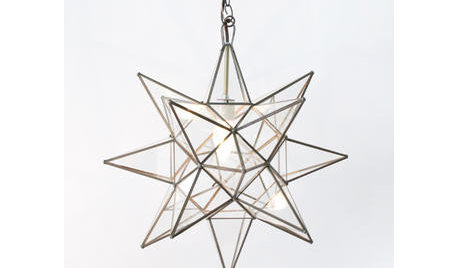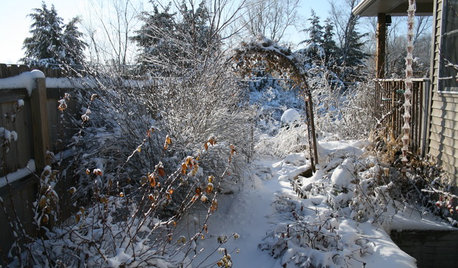Pump on or off this winter?
lilgreenfrog
16 years ago
Related Stories

DECORATING GUIDESTake the Chill Off With Cozy Winter Textures
Stay warm this fall and winter with your favorite applications of velvet, wool and knits and plenty of woodsy accents
Full Story
PRODUCT PICKSGuest Picks: Winter Lights to Ward Off Dark Nights
Don't let less daylight around the winter solstice get you down — these lights, candles and mirrors will keep your home merry and bright
Full Story
FALL AND THANKSGIVINGSimple Pleasures: A Cozy Home in Cold Weather
Stock up on these treats and essentials to make even blustery days and snowed-in time feel special
Full Story
LIFE6 Ways to Beat the Winter Blahs
Snow and dark days dampening your spirits? These ideas will have you looking on the bright side
Full Story
GARDENING GUIDESGarden Myths to Debunk as You Dig This Fall and Rest Over Winter
Termites hate wood mulch, don’t amend soil for trees, avoid gravel in planters — and more nuggets of garden wisdom
Full Story
DECORATING GUIDESHouzz Tour: Couple Pares Down and Pumps Up the Style
A big transition from a large suburban house to a 1,200-square-foot urban condo is eased by good design
Full Story
MORE ROOMSHip Home Gyms Get Hearts Pumping
Has your workout plan hit a plateau? Snap back into gear with these stylish home exercise rooms
Full Story
EXTERIORSPergolas Pump Up Curb Appeal
Pergolas aren't just for the backyard. Mount them over the garage to add a graceful flourish to your home's facade
Full Story
LIFE6 Ways to Cool Off Without Air Conditioning
These methods can reduce temperatures in the home and save on energy bills
Full Story
GREEN BUILDINGOff the Grid: Ready to Pull the Plug on City Power?
What to consider if you want to stop relying on public utilities — or just have a more energy-efficient home
Full StoryMore Discussions









sleeplessinftwayne
lilgreenfrogOriginal Author
Related Professionals
New Bedford Landscape Architects & Landscape Designers · Benbrook Landscape Architects & Landscape Designers · Mountain Brook Landscape Architects & Landscape Designers · New Mexico Landscape Architects & Landscape Designers · Taylorsville Landscape Architects & Landscape Designers · Burlington Landscape Contractors · Allentown Landscape Contractors · Azalea Park Landscape Contractors · Bergenfield Landscape Contractors · Franklin Landscape Contractors · Hendersonville Landscape Contractors · Longmont Landscape Contractors · Setauket-East Setauket Landscape Contractors · Teaneck Landscape Contractors · Antioch Landscape Contractorshorton
sleeplessinftwayne
beth4
lilgreenfrogOriginal Author
nkm56
horton
johnkr
sleeplessinftwayne
nancyd
always_outside
johnkr
sleeplessinftwayne